There’s something magical about that first spoonful of a properly made mushroom bisque.
The way it coats your palate with silky richness while delivering deep, earthy flavors that seem to whisper secrets of forest floors and autumn harvests.
As someone who’s spent years perfecting my mushroom game in the kitchen, I can tell you that bisque represents the pinnacle of mushroom soup craftsmanship.
Traditional French bisque recipes might intimidate with their emphasis on precise techniques and specialty equipment. But I’ve found that focusing on quality ingredients and a few key preparation methods can deliver that signature creaminess and depth without the fuss.
What is Mushroom Bisque?
Let’s clear up a common confusion I’ve noticed at many dinner parties. Golden mushroom soup and mushroom bisque might sound similar, but they deliver entirely different experiences on your taste buds.
Golden mushroom soup is the lighter cousin in the mushroom soup family. It’s brothy and clear rather than thick, with a distinctive amber color from its tomato base. The flavor profile leans tangy and bright, with mushrooms playing more of a supporting role. It’s delicious in its own right, especially when looking for something less filling.
Mushroom bisque, on the other hand, is luxury in a bowl. It’s defined by its thick, creamy texture and velvety mouthfeel. Every spoonful delivers a concentrated mushroom flavor that’s been carefully developed through proper cooking techniques.
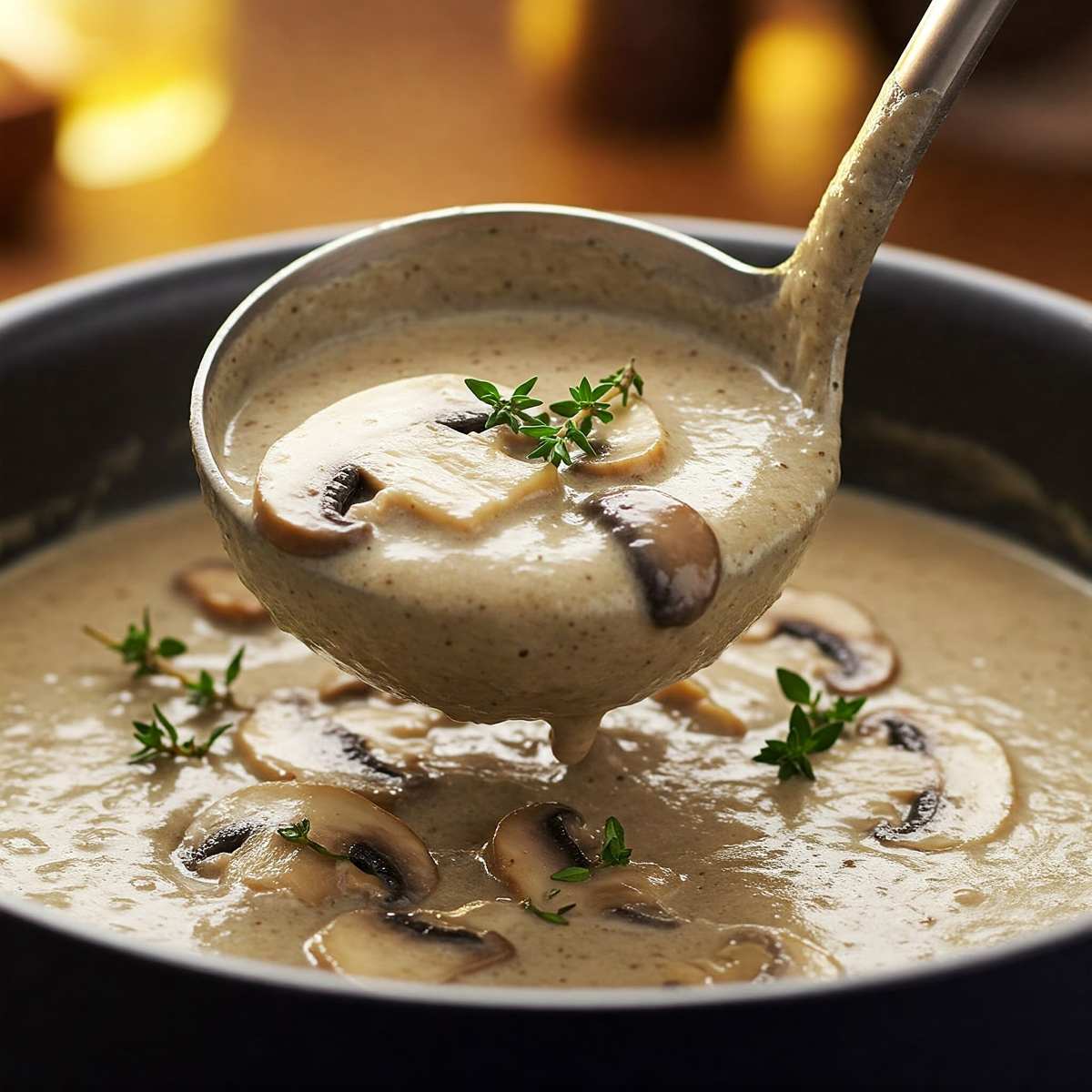
The richness comes from the pureed mushrooms themselves combined with cream, creating that signature smooth consistency.
Choosing the Right Mushrooms
For a truly memorable bisque, cremini mushrooms (baby portobellos) should form your base. They deliver a more robust flavor than white buttons while remaining affordable and widely available. Their brown caps signal a more developed flavor profile that stands up beautifully to the cream.
For depth and complexity, incorporate some shiitake mushrooms. They bring an intense woodsy quality that elevates the entire dish. Remove the tough stems before cooking, but don’t discard them – add them to your stock pot for extra flavor before straining them out.
Portobello mushrooms, the fully mature version of creminis, contribute a meaty, substantial quality. One large cap, diced small, adds remarkable depth to your bisque. Wild mushrooms like chanterelles, morels, or oyster mushrooms make wonderful additions when available, though they’re admittedly a splurge.
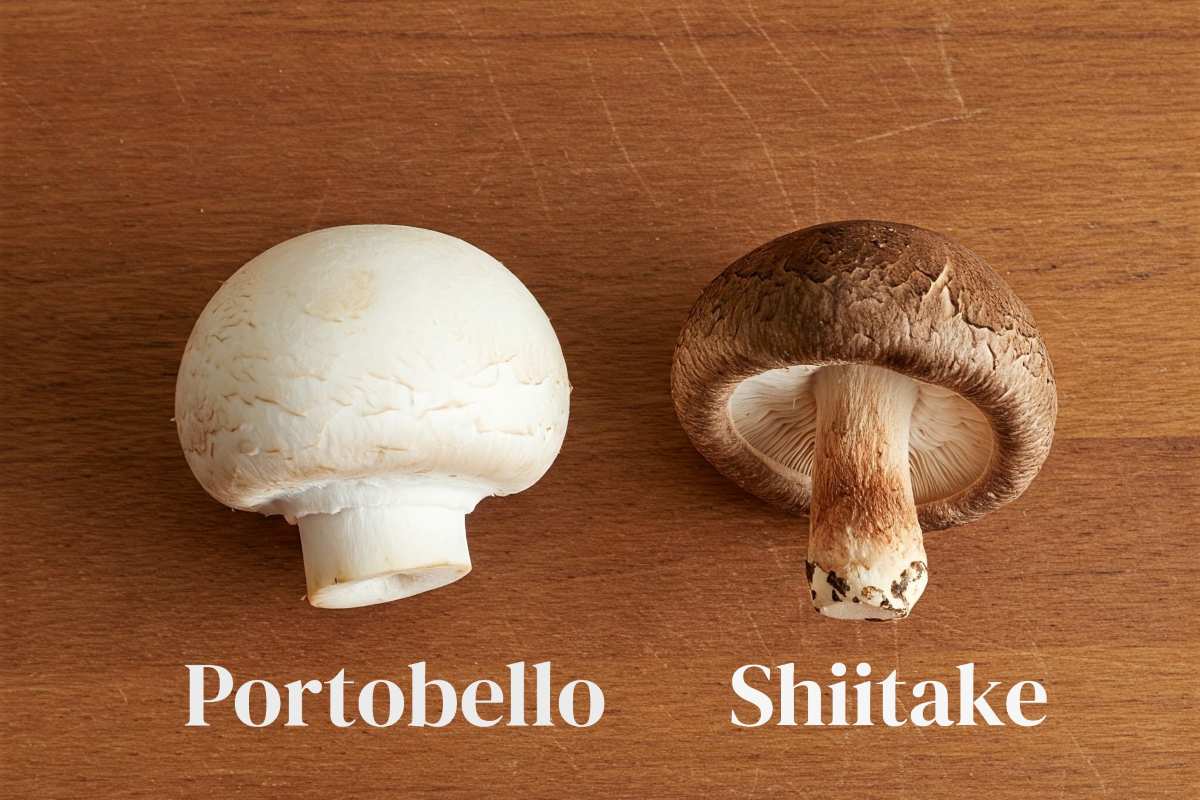
I’ve found that the magic formula is about 70% basic mushrooms (cremini) with 30% specialty mushrooms. This balance delivers gourmet flavor without emptying the wallet.
As for fresh versus dried mushrooms, each has its place. Fresh mushrooms provide the bulk and main texture, while a small amount of rehydrated dried porcini or shiitake can amplify the mushroom flavor exponentially.
Essential Ingredients Beyond Mushrooms
The supporting cast in a mushroom bisque is just as important as the star. I’ve experimented with countless variations, and these complementary ingredients consistently elevate the final result.
Aromatics form the flavor foundation of any great bisque. Shallots offer a perfect balance of garlic and onion notes without overwhelming the mushrooms’ delicacy. I prefer them over regular onions for their subtle sweetness. Garlic adds necessary pungency, but using it judiciously requires 2-3 cloves.
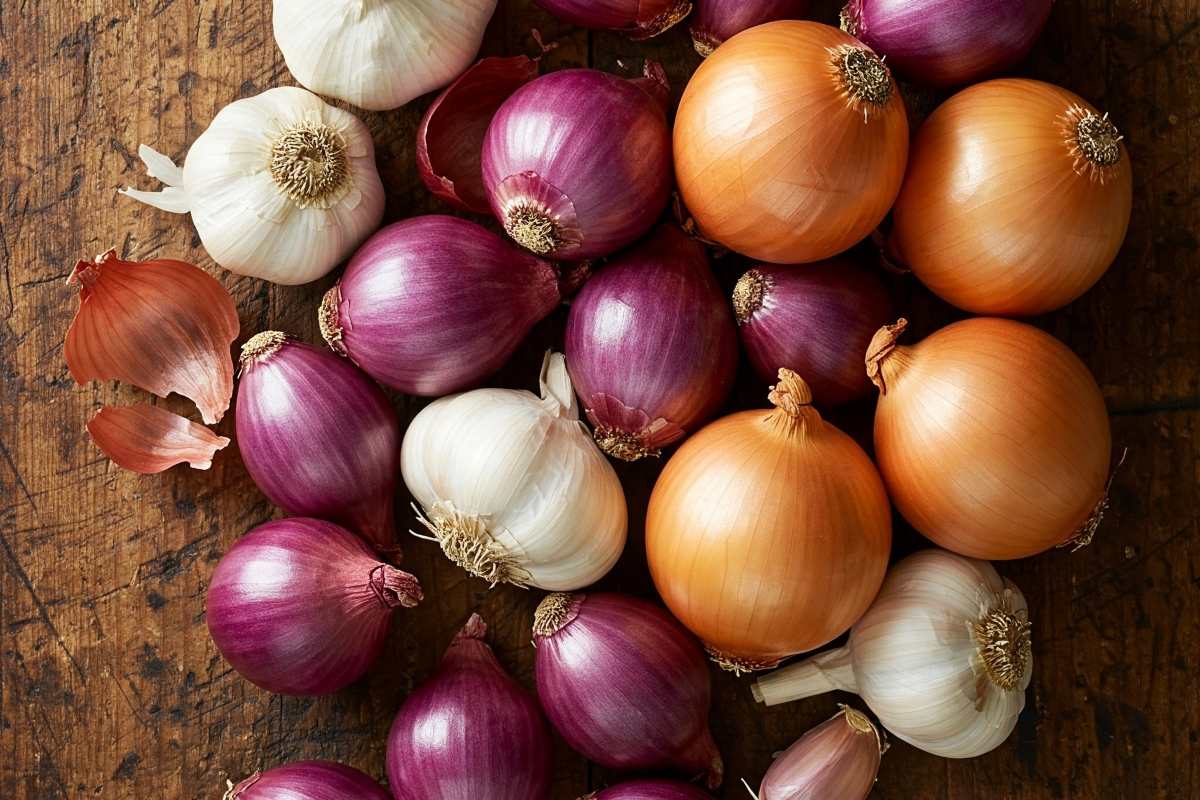
Leeks bring a gentle, sweet onion quality that enhances without dominating. The white and light green parts, finely chopped and slowly sweated in butter until translucent, create a remarkable foundation.
When it comes to stock selection, I’ve tried them all and have strong opinions. Mushroom stock is ideal but time-consuming to make from scratch. A good vegetable stock works wonderfully for vegetarians.
For omnivores, chicken stock adds a subtle richness that complements mushrooms beautifully. Beef stock, surprisingly, can overwhelm the mushroom flavor – I avoid it unless specifically going for a beef and mushroom combination.
The creamy element deserves special attention. Heavy cream is traditional, delivering luxurious richness. For a lighter option that still maintains silkiness, I often use half-and-half. Plant-based alternatives like full-fat coconut milk or cashew cream work surprisingly well if you’re avoiding dairy. Whatever you choose, add it at the end of cooking and avoid boiling after addition to prevent curdling.
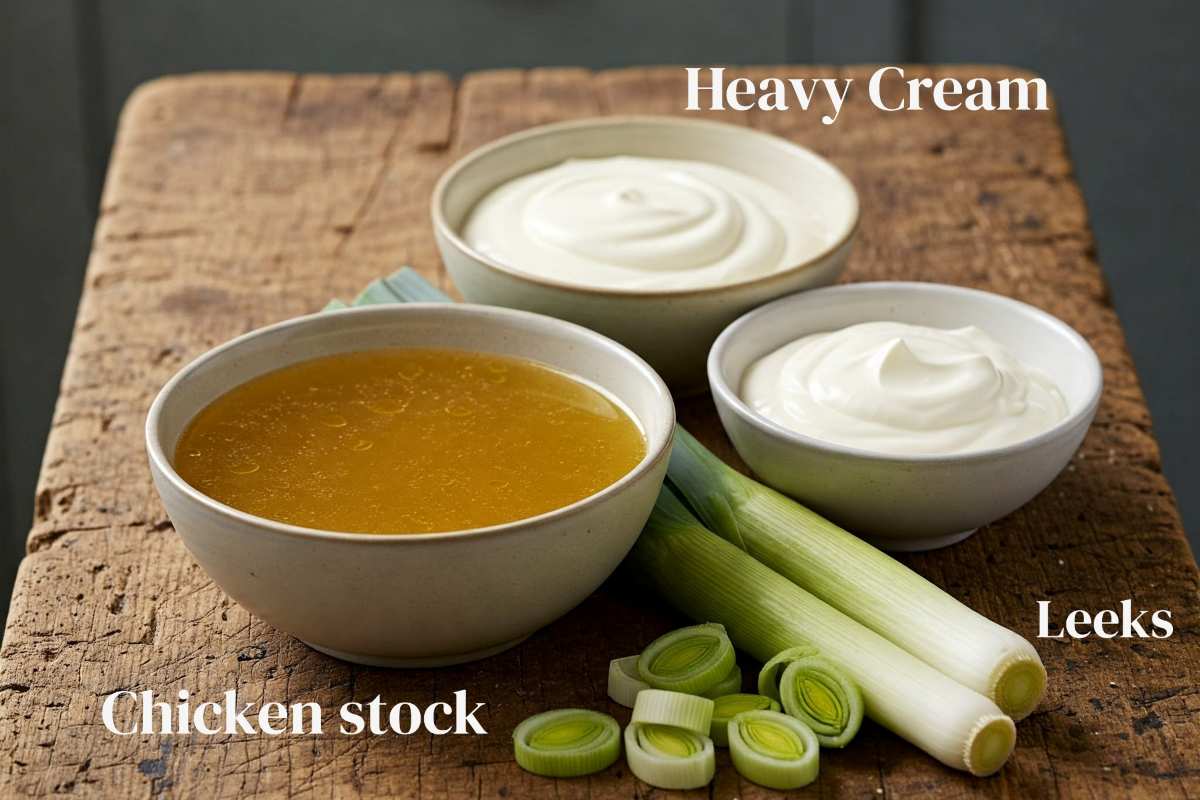
For herbs and finishing touches, fresh thyme is non-negotiable in my kitchen. Its earthy, slightly floral notes enhance mushrooms perfectly. A splash of dry white wine adds brightness and acidity that balances the richness. For special occasions, a few drops of truffle oil just before serving creates an unforgettable aroma – though a little goes a long way.
A final essential that often gets overlooked: acid balance. A small splash of sherry vinegar or lemon juice added at the very end brightens the entire bisque. It won’t make the soup taste acidic if used correctly – rather, it makes all the other flavors pop and prevents the cream from feeling too heavy on the palate.
Cooking Technique: Making the Bisque Simple
I’ve found that making a truly exceptional mushroom bisque comes down to a few key techniques rather than complicated processes.
The good news? You don’t need fancy equipment or professional training to nail these steps.
The magic starts with the sauteing stage. Toss in some shallots, garlic, and leeks, and let them soften until they turn fragrant and translucent.
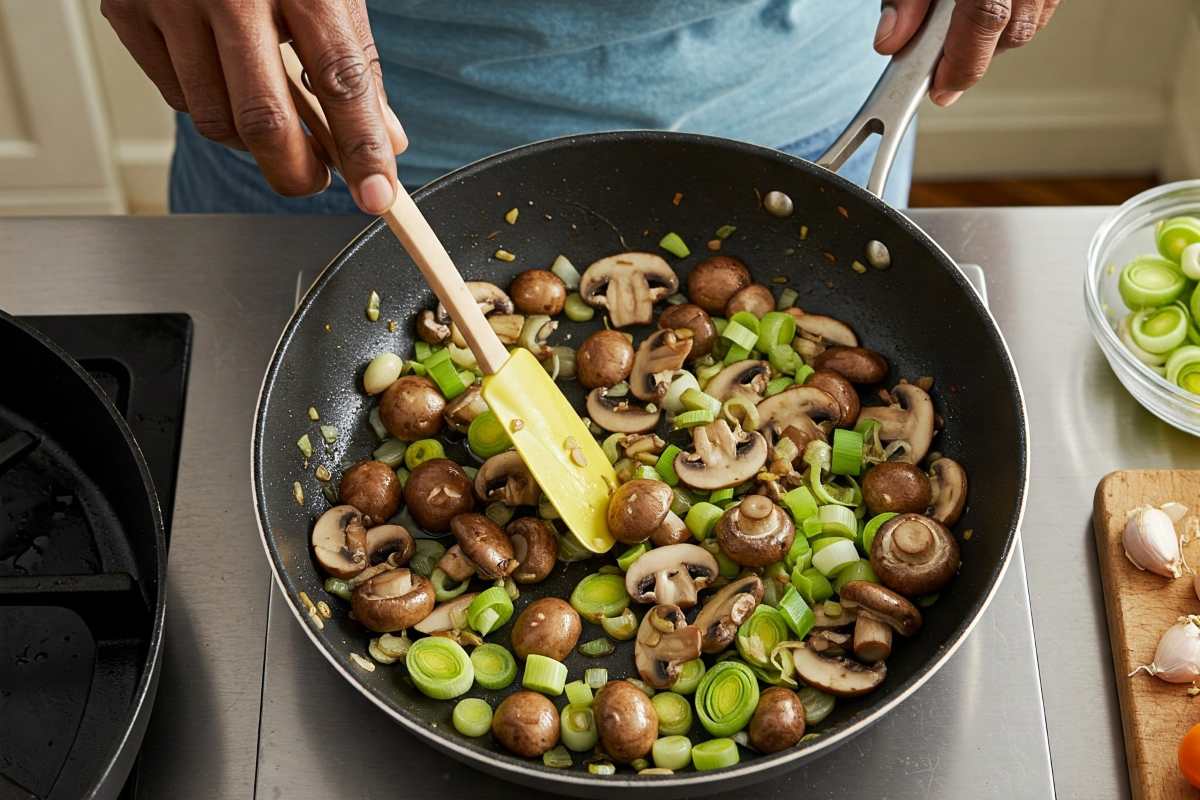
Now, here’s a crucial step: let the mushrooms brown properly. You want them to release their moisture and take on that deep golden color—that’s where the flavor magic happens. This isn’t just about looks; it’s the Maillard reaction at work—a natural browning process that develops rich, complex flavors.
Then comes the crucial step: getting a proper sear on your mushrooms.
Here’s a technique I learned after years of soggy mushrooms: don’t crowd the pan! Work in batches if needed, giving your mushrooms space to release their moisture and then brown. That caramelization is pure flavor gold.
I also resist the urge to stir constantly. Letting mushrooms sit undisturbed for 1-2 minutes creates those beautiful browned edges that transform your bisque from good to memorable.
When it comes to blending for smoothness, you’ve got options. A standard blender creates the silkiest texture, but be careful with hot liquids – never fill it more than halfway and always start on low speed with the lid vented slightly.
An immersion blender is more convenient and safer for hot liquids, though the texture might be slightly less velvety. I like to remove about a quarter of the sautéed mushrooms before blending, then fold them back in afterward for textural contrast.
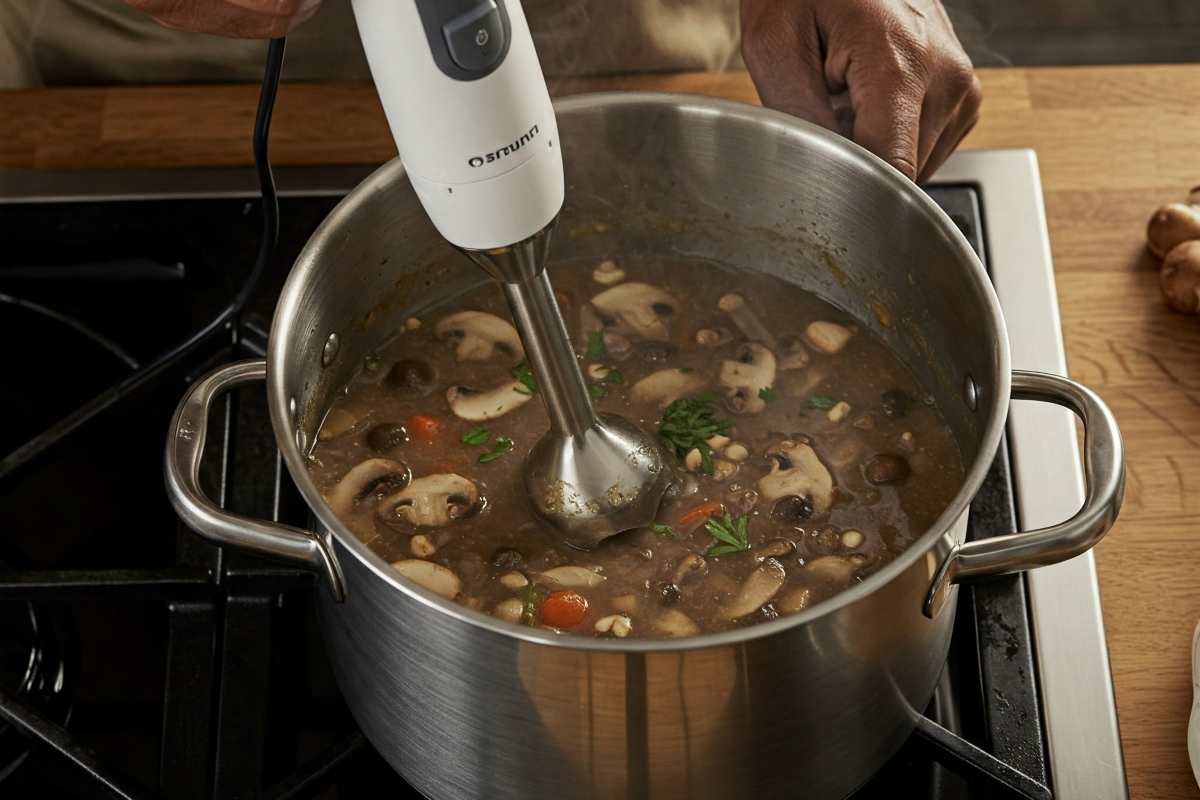
The finishing stage is where your bisque comes together. After blending, return the soup to low heat and add your cream or alternative thickener, stirring gently to incorporate.
This is when I taste and adjust seasonings – soup often needs more salt and pepper than you might think. A splash of acid (lemon juice or a touch of sherry vinegar) brightens everything up without making it taste sour.
The soup should coat the back of a spoon but still flow smoothly – if it’s too thick, a little extra stock will thin it perfectly.
How to Store and Reheat for Best Quality
I often make a double batch of mushroom bisque because it stores beautifully, and having it on hand feels like finding treasure in your refrigerator after a long day.
Refrigerating: How to Keep It Fresh
Here’s the golden rule: cool it quickly. Letting soup sit too long at room temperature can lead to bacterial growth. The USDA recommends cooling food within two hours to keep it safe.
Once it’s at room temperature:
- Pour it into an airtight container.
- Pop it in the fridge for up to 4 days.
- Store any garnishes separately (nobody likes soggy croutons or wilted herbs).
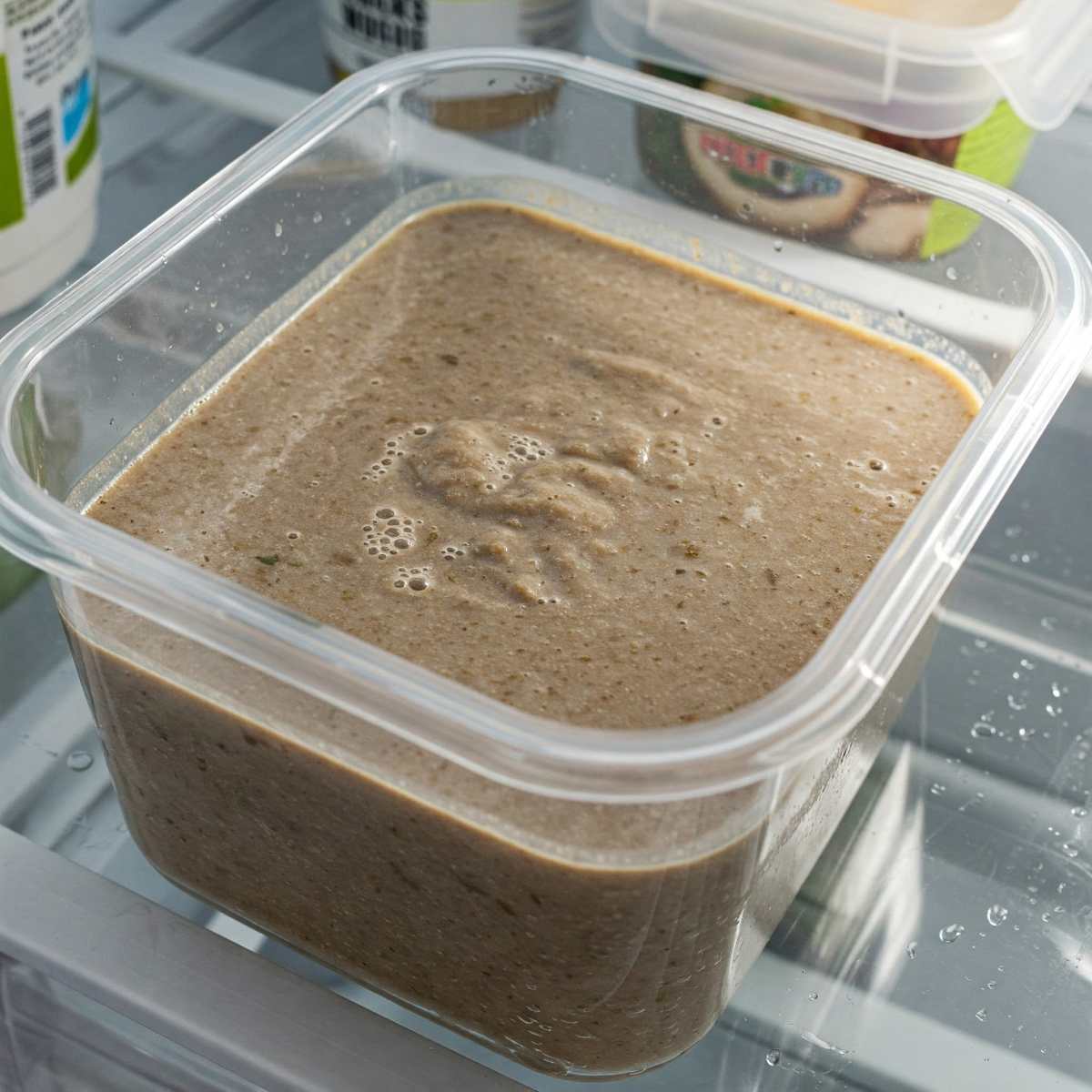
Freezing: A Trick to Avoid Grainy Bisque
Mushroom bisque freezes well! But there’s one catch: cream-based soups can sometimes separate when frozen. The best way to prevent this? Freeze it before adding the cream. Then, just stir in fresh cream after reheating.
How to freeze it properly:
- Let it cool first.
- Pour into freezer-safe containers or bags (leave a little space for expansion).
- Label it (trust me, all frozen soups look the same after a month).
- Use within 3 months for the best taste.
Now, how do you reheat it without ruining that creamy texture?
- Stovetop (Best Method): Heat over low to medium heat, stirring often. If you froze it without cream, now’s the time to add it.
- Microwave (For Convenience): Use medium power and heat in 30-second bursts, stirring in between.
- Avoid Boiling: High heat can cause the cream to separate and turn grainy. If that happens, a quick blend can help smooth things out.
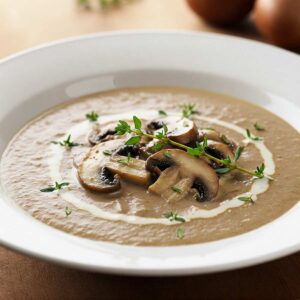
Gourmet Mushroom Bisque – A Creamy Classic
Equipment
- 1 Large heavy-bottomed pot or Dutch oven
- 1 Sharp chef's knife
- 1 Cutting board
- 1 Blender or immersion blender
- 1 Wooden spoon
- Measuring cups and spoons
- Fine mesh strainer (optional)
Ingredients
- 1.5 lbs /680g mixed mushrooms (primarily cremini, with some shiitake and portobello)
- 0.5 oz /15g dried porcini mushrooms (optional)
- 3 tablespoons unsalted butter
- 2 medium shallots finely diced (about 1/2 cup)
- 2 cloves garlic minced
- 1 leek white and light green parts only, cleaned and thinly sliced
- 2 teaspoons fresh thyme leaves or 1 teaspoon dried
- 1/4 cup dry white wine
- 4 cups vegetable or chicken stock
- 1 cup heavy cream or half-and-half for lighter version
- 1 teaspoon kosher salt plus more to taste
- 1/2 teaspoon freshly ground black pepper
- 1 teaspoon lemon juice or sherry vinegar
- Fresh chives or thyme for garnish
- Truffle oil for drizzling optional
Instructions
Prepare the mushrooms:
- If using dried porcini, place them in a bowl with 1 cup of hot water and let soak for 20 minutes. Strain through a coffee filter, reserving liquid. Chop rehydrated mushrooms.
- Clean fresh mushrooms with a damp paper towel. Remove stems from shiitakes (save for stock). Slice all mushrooms into 1/4-inch pieces.
- Reserve about 1/2 cup of sliced mushrooms for garnish if desired.
Build the flavor base:
- Melt butter in a large pot over medium heat.
- Add shallots, leeks, and a pinch of salt. Cook until softened but not browned, about 4-5 minutes.
- Add garlic and cook for 30 seconds until fragrant.
Cook the mushrooms:
- Increase heat to medium-high and add mushrooms in batches if necessary (don’t crowd the pan).
- Cook without stirring for 2 minutes, then stir and continue cooking until mushrooms have released their moisture and begun to brown, about 5-7 minutes total.
- Add thyme and cook for 1 minute more.
Create the liquid base:
- Pour in white wine and scrape up any browned bits from the bottom of the pot.
- Add stock and reserved mushroom soaking liquid (if using dried mushrooms).
- Bring to a simmer and cook for 15 minutes, uncovered.
Blend the soup:
- Remove from heat and let cool slightly.
- If desired, reserve about 1/4 of the mushroom mixture for texture.
- Use an immersion blender to puree the soup until smooth, or carefully transfer in batches to a regular blender.
Finish the bisque:
- Return soup to pot over low heat.
- Stir in cream, reserved mushroom pieces, salt, and pepper.
- Heat gently until warmed through (do not boil).
- Add lemon juice or sherry vinegar.
- Taste and adjust seasonings as needed.
Serve:
- Ladle into warmed bowls.
- Garnish with reserved sautéed mushrooms, fresh herbs, and a few drops of truffle oil if using.




